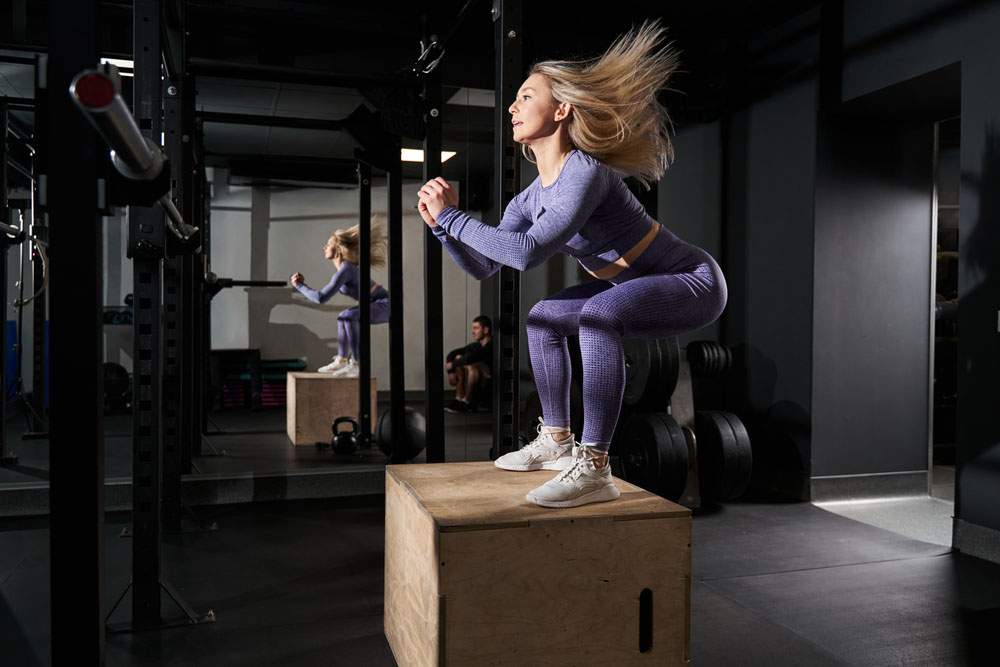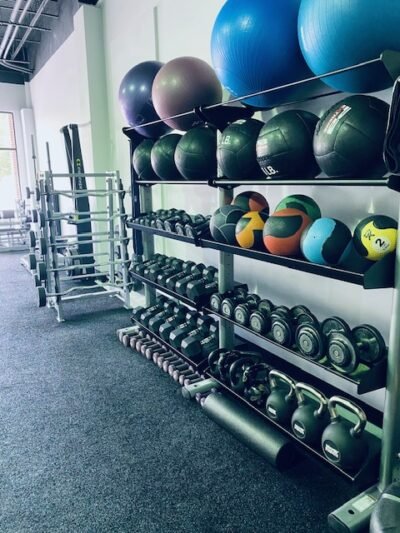Georgia Personal Training/Roswell Fitness Factory
Fitness enthusiasts, rejoice! Athletes at every level are discovering the immense benefits and adrenaline-pumping excitement of Plyometric Box Training. At the heart of this dynamic workout lies the simple yet versatile plyometric box, a quintessential tool in sculpting powerful, agile, and well-toned physiques. Whether you’re a die-hard CrossFit aficionado, a cardio-loving gym-goer, or simply someone looking to spice up their fitness regimen, plyometric box workouts are a game-changer.
Plyometric Boxes: An Essential Tool
Plyometric boxes, also known as plyo boxes or jump boxes, are found in every well-equipped gym for one compelling reason—they work. These sturdy platforms come in a variety of heights and are designed for explosive, weight-bearing exercises that can dramatically enhance your physical performance. The beauty of plyo boxes lies in their adaptability to your skill level. Whether you’re a novice or a seasoned veteran, there’s a box height that is just right for you, allowing for a gradual yet challenging progression in your workouts.
Benefits of Plyometric Box Workouts
The advantages of incorporating plyometric box training into your routine are as broad as they are deep. Here are just a few of the many benefits:
- Increased Power, Agility, and Speed – Plyometric exercises tap into your body’s natural elastic properties to increase your muscle power. The explosive movements performed on plyo boxes translate into faster sprints, higher jumps, and more forceful strides.
- Enhanced Cardiovascular Fitness – Given their high intensity, plyo box workouts are fantastic for elevating the heart rate and keeping it there. This combination of strength and cardio can lead to enhanced stamina and a more efficient cardiovascular system.
- Improved Coordination and Balance – Landing on a plyo box necessitates control and precision, which over time, improves your coordination and balance. Enhanced proprioception—the sense of your body’s position in space—is a hidden gem of plyometric training.
Plyometric Box Exercises
The quintessential plyo box exercises are the foundation of this training method. Master these, and you’ve laid down the groundwork for a wide array of variations and combinations.
- Box Jumps – Simple in concept, box jumps are the staple exercise for beginners and seasoned pros alike. Start with a comfortable box height and focus on the explosive power of your lower body to propel you onto the box.
- Step-Ups – A more controlled motion, step-ups are excellent for unilateral strength and can help correct muscle imbalances. Try using a higher box for a more challenging workout.
- Burpee Box Jumps – A favorite among High-Intensity Interval Training (HIIT) aficionados, the burpee box jump combines two full-body movements into a single, heart-pounding rep.
Plyometric Box Workouts for Different Fitness Levels
Whether you are taking your first leap onto a plyo box or attempting to elevate your training to new heights, there is a workout routine tailor-made for you.
- Beginner Workouts – Start with low box jumps and focus on mastering the technique. Keep the volume low and take ample rest between sets. You will build confidence and a strong foundation.
- Intermediate Workouts – In the intermediate stage, challenge yourself with higher box jumps and incorporate more complex movements like burpee box jumps. Aim for increased volume and work on minimalizing your rest periods.
- Advanced Workouts – For those at an advanced level, sky’s the limit—quite literally. Experiment with the height and even try weighted jump variations. Implement plyo box jumps into circuit training for an added cardio kick.
Tips for Safe and Effective Plyometric Training
High-impact exercises bring along risks, but they can be managed with proper training and mindfulness. Here are some key tips for safe and effective plyometric training:
Importance of Proper Form and Equipment
Never underestimate the importance of proper form. It not only ensures maximum benefits but also greatly reduces the possibility of injury. Additionally, ensure the plyometric box and its surroundings are free of any obstructions or hazards.
Injury Prevention Strategies
Injuries like Achilles tendonitis or knee strains can be common if you overdo it or if your form is sloppy. Gradually increase the intensity of your workouts and always warm up thoroughly. It’s equally critical to cool down and stretch post-workout, paying close attention to the lower body musculature.
Real-Life Success Stories
Nothing is more motivating than real-life success stories. Here are several individuals whose lives have been influenced by the potent plyometric box:
Testimonial 1
Meet Sarah, a runner who added plyometric box workouts to her training. She swears by the improvement in her sprint times and the noticeable decrease in her mile pace.
Testimonial 2
John, a high school basketball player, incorporated plyometric box jump training into his off-season routine. His vertical leap and overall upper-leg strength have soared, setting the stage for his best season yet.
Conclusion
Plyometric Box Training workouts offer a tantalizing mix of challenge and reward. By leveraging the power of gravity and explosive movements, you can tap into reserves of strength and agility you never knew you had. Are you ready to take the leap—literally and figuratively—and incorporate plyometric box training into your fitness quest? The box is waiting; it is your time to rise to the challenge and elevate your workouts to new heights. With the right approach and dedication to both technique and safety, plyometrics can be the defining factor in your fitness evolution.
Georgia Personal Training
Plyometric Training has been shown to be one of the most effective training modalities for athletes to develop both speed and explosive power. Plyometrics refers to exercises that require a muscle to exert maximum force in the shortest possible time. In plyometric movements the muscle is loaded with an eccentric (lengthening) action, followed immediately by a very short transition phase (amortization), and then a rapid concentric (shortening) contraction. This process is called the stretch shortening cycle or SSC.
A muscle has much of the same properties as a rubber band. When muscle is stretched prior to contraction, it creates stored elastic energy and will then contract more forcefully and rapidly than it would from a static state. There is also a process that occurs when a sudden rapid stretch is detected in the muscles in which an involuntary protective response will initiate to prevent injury. This involuntary response is referred to as the “stretch reflex”. Both the elastic component of muscle and the stretch reflex are believed to be the driving forces behind the increased rate of force production during plyometric exercises.
So how do plyometrics build power and speed for athletes?
Plyometrics help increase the body’s ability to rapidly contract the muscles and create maximum power output in the shortest possible time. Simply put, they are the key to increasing one’s ability to generate force very fast. Creating maximum force is what we as athletes are striving for. Whether it’s exit velocity off the bat, the force of a punch or tackle, the velocity of a pitch or tennis serve, etc. Maximum force is the objective of any athlete.
Force = Mass x Acceleration. Most trainers focus primarily on the mass part of that equation. In doing so they are not achieving optimal results for their athletes and could in fact be harming them. If strength training is done in a manner that reduces speed, causes imbalances, breaks down technique, or causes limited range of motion it is actually reducing an athlete’s ability to generate force. Simply put, they may be squatting heavy, but their velocity is dropping, and their 60 times are increasing rather than decreasing.
This is why plyometrics are so beneficial. They address both strength and speed simultaneously while also improving balance, range of motion, agility, and neurological response. Examples of plyometric movements would be squat jumps, box jumps, depth jumps, ski jumps, medicine ball slams, rotational throws, etc. There is a plethora of dynamic plyometric movements that can be utilized for both the lower and upper body to create the most explosive, powerful athlete possible. At GPT, we try to incorporate plyometric movements into every single training session. Our objective is to create home runs, velocity, and stolen bases, not deadlift and squat PRs.
The Roswell Fitness Factory/Georgia Personal Training
9420 Willeo Road (Suite 105)
Phone: (770) 241-1086
Email: matthewlein@bellsouth.net



